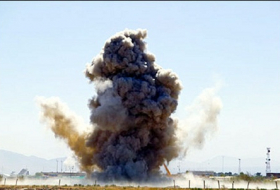They know it’s out there, such is its size — potentially 10 times bigger than Earth — and its powerful gravitational pull.
But Planet Nine is proving impossible to find, demonstrating how much we still don’t know about what’s in our own world’s backyard.
Astronomer Alan Duffy, a Professor of Astrophysics at Swinburne University, said the theory behind Planet Nine only emerged relatively recently after a Brazilian stargazer noticed odd happenings in the outskirts of the solar system.
“The idea is that the outer orbits of our solar system showed surprising behavior that can be explained by the gravitational pull of a very large, very distant world,” Professor Duffy said.
It was 2012 and Rodney Gomes, an astronomer at the National Observatory in Rio de Janeiro, offered his theory that a giant planet that couldn’t be seen was behind the disturbance.
But how can you declare the existence of a major planet without being able to see it or even vaguely pinpoint where it is?
“There’s historical precedence here because it’s exactly how we found Neptune,” Professor Duffy said.
The planet Uranus was discovered using a telescope in 1781 but it raised more questions than it answers, he explained.
“Put simply, Uranus wasn’t where it was meant to be,” he said. “It wasn’t quite at the position that calculations indicated it should’ve. As the years passed, mathematics determined that there was an even larger or further out planet that was pulling its orbit.”
That planet was Neptune, which was basically predicted to exist before it was discovered using math.
“It’s a similar situation now where these tiny objects at the very outer edges of our solar system in what we call the Kuiper Belt have very strange orbits,” Professor Duffy said.
“They seem to be all on one side, preferentially stacked, and the way to explain that is with the idea that Planet Nine has essentially flung them out there with its gravity.”
He estimates that Planet Nine is about 400 times further away from the sun than we are, so finding it is kind of like shining a torch westward from Sydney and hoping to see Perth with it.
It would be around 100 million times fainter than the faintest star we can see with our eyes, he estimated.
“The issue is that there’s an enormous amount of space to search. Even a very large planet, much larger than the earth, is very tiny at that distance,” Professor Duffy said.
“You’re looking for something very faint. It essentially looks like a very dim star basically and there are many of those out there.”
And it’s so far away that it probably takes about 10,000 years to do a full orbit of the sun, meaning it moves very slowly.
“It’s the slightest of slight movements,” he said. “You’re effectively looking at half of the night sky and looking to see if something faint is moving.”
Professor Duffy equates it to trying to find a needle that looks a lot like hay in a giant haystack.
“The solar system is deceptively large. Most people imagine that the various planets are relatively close together and our telescopes have found everything in between them.
“Nothing could be further from the truth. The actual space in between is enormous. Even close to our earth, the space is littered with enormous pieces of rock that we haven’t been able to catalog yet or even detect.
“The further you get from the sun, the more challenging it becomes.”
To put the size of the solar system in perspective, Professor Duffy uses Australian locations and landmarks to make his point.
“If the Sun was at the Sydney Opera House, then Earth would be orbiting closer than the airport, while this Planet Nine would be circling as far out as Perth,” he said.
“But the outer edges of our solar system, where a graveyard of enormous chunks of ice float that give us long-period comets, would be past the moon on this scale.”
Why does anyone care about finding a big chunk of floating mass that’s really far away and uninhabitable?
Professor Duffy said Planet Nine could test what astronomers know about how planets are formed, particularly in this part of the solar system.
“Something that large so far out will be fascinating. Will it be an icy world? Will it be rocky? Will it potentially be a gas giant? I suspect it’s more likely to be something like a super-sized version of Pluto, but then again, we don’t know. It’s the reason we look, to try to better understand our solar system and how these worlds are formed.”
More about: #Astronomy
















































